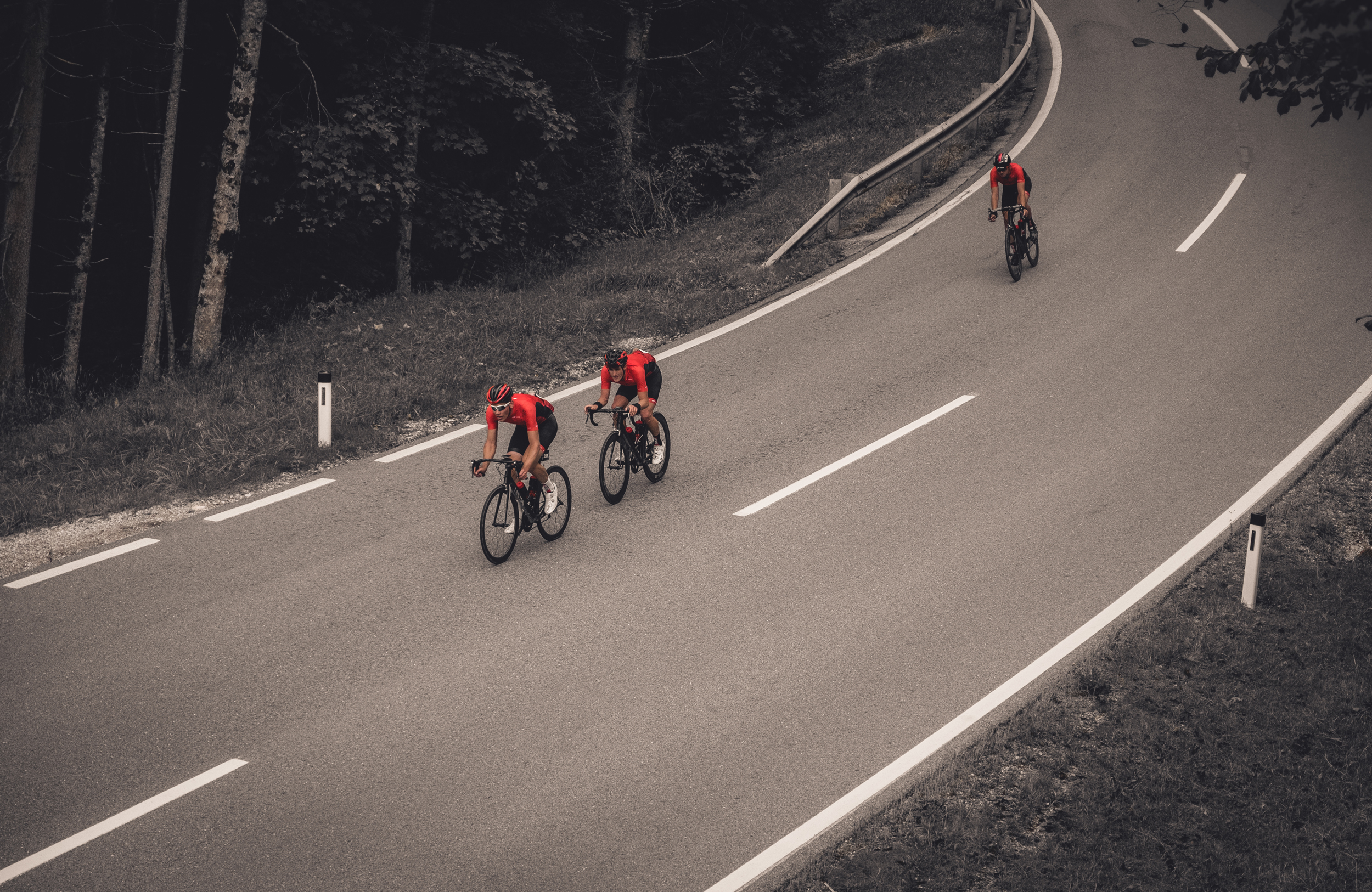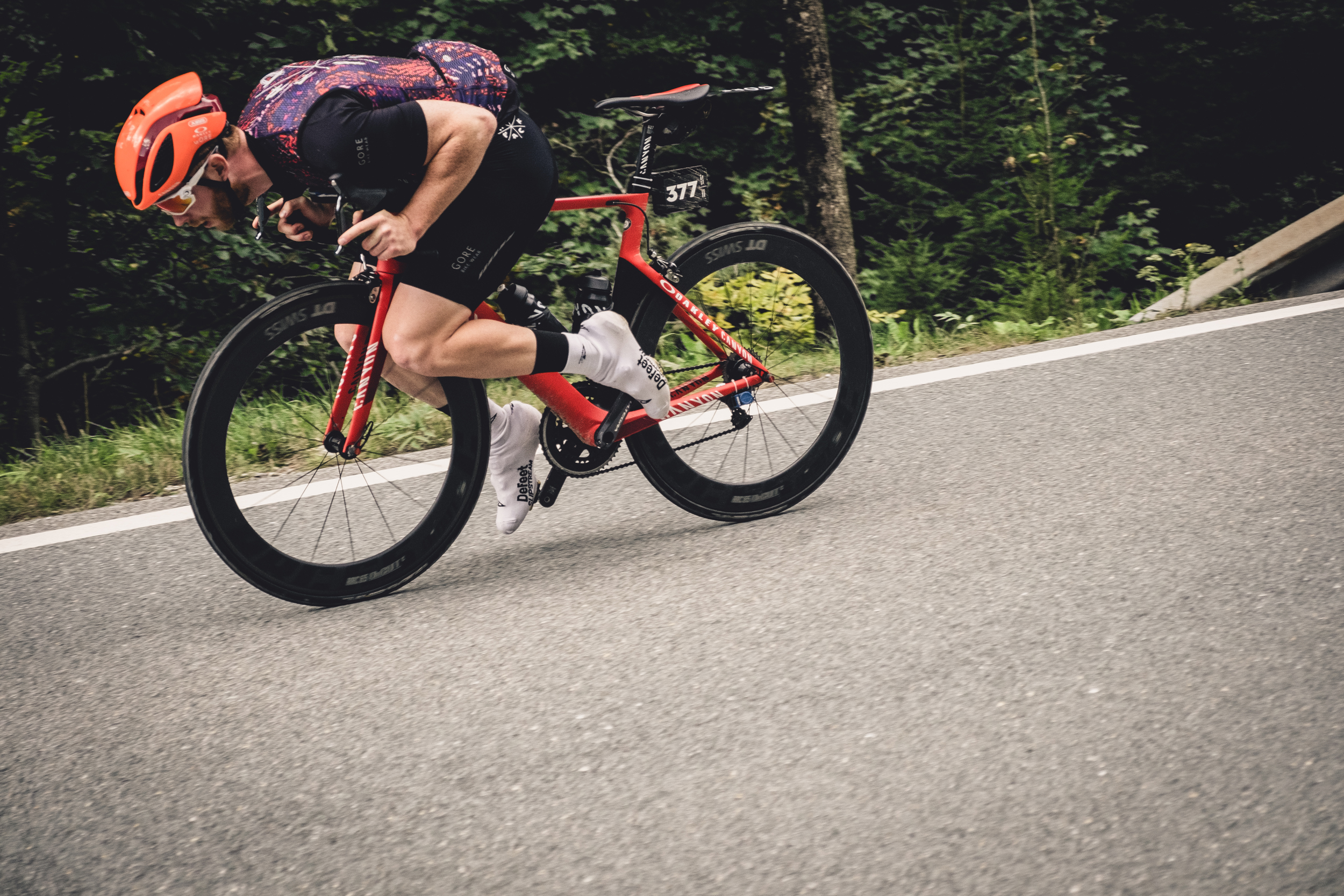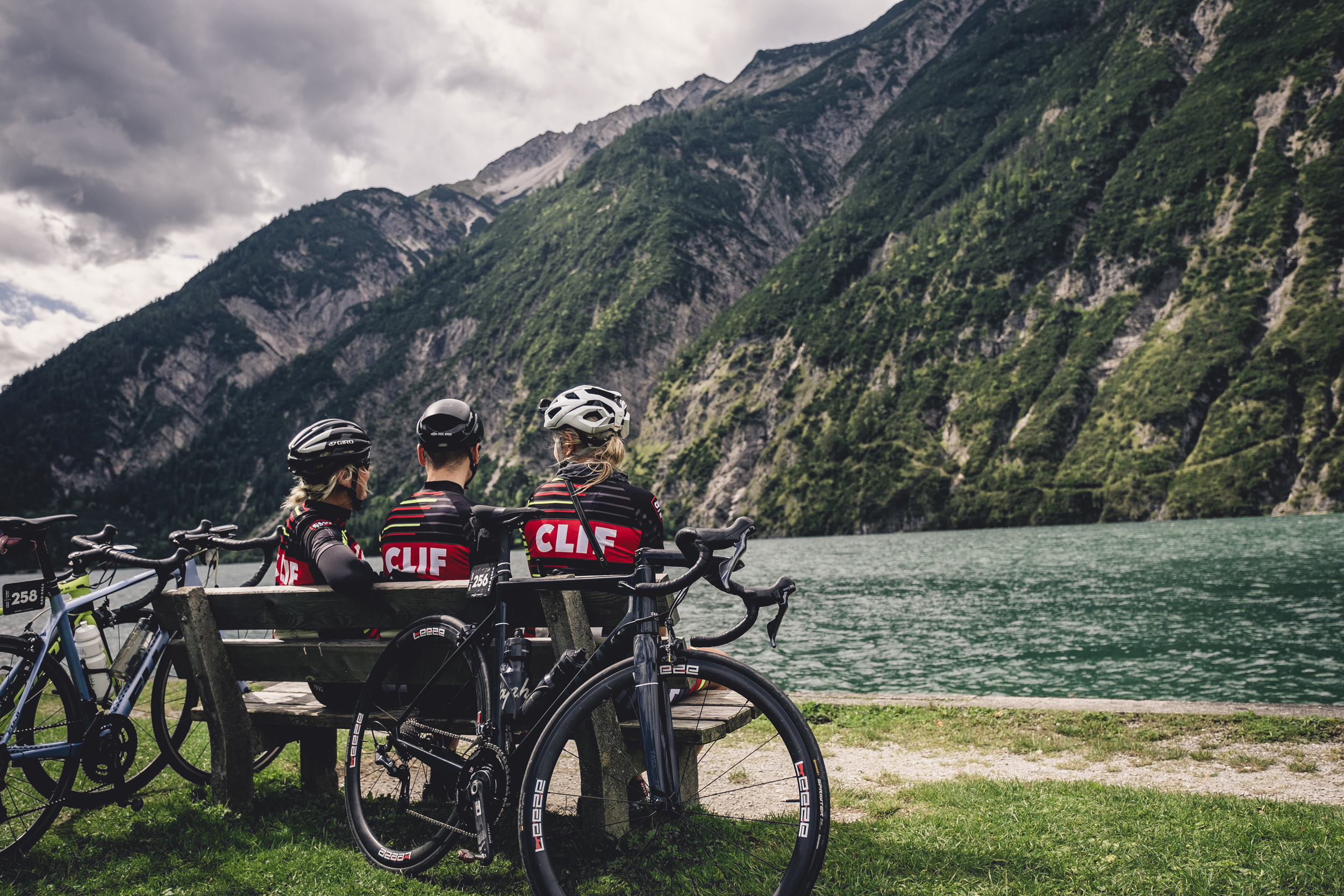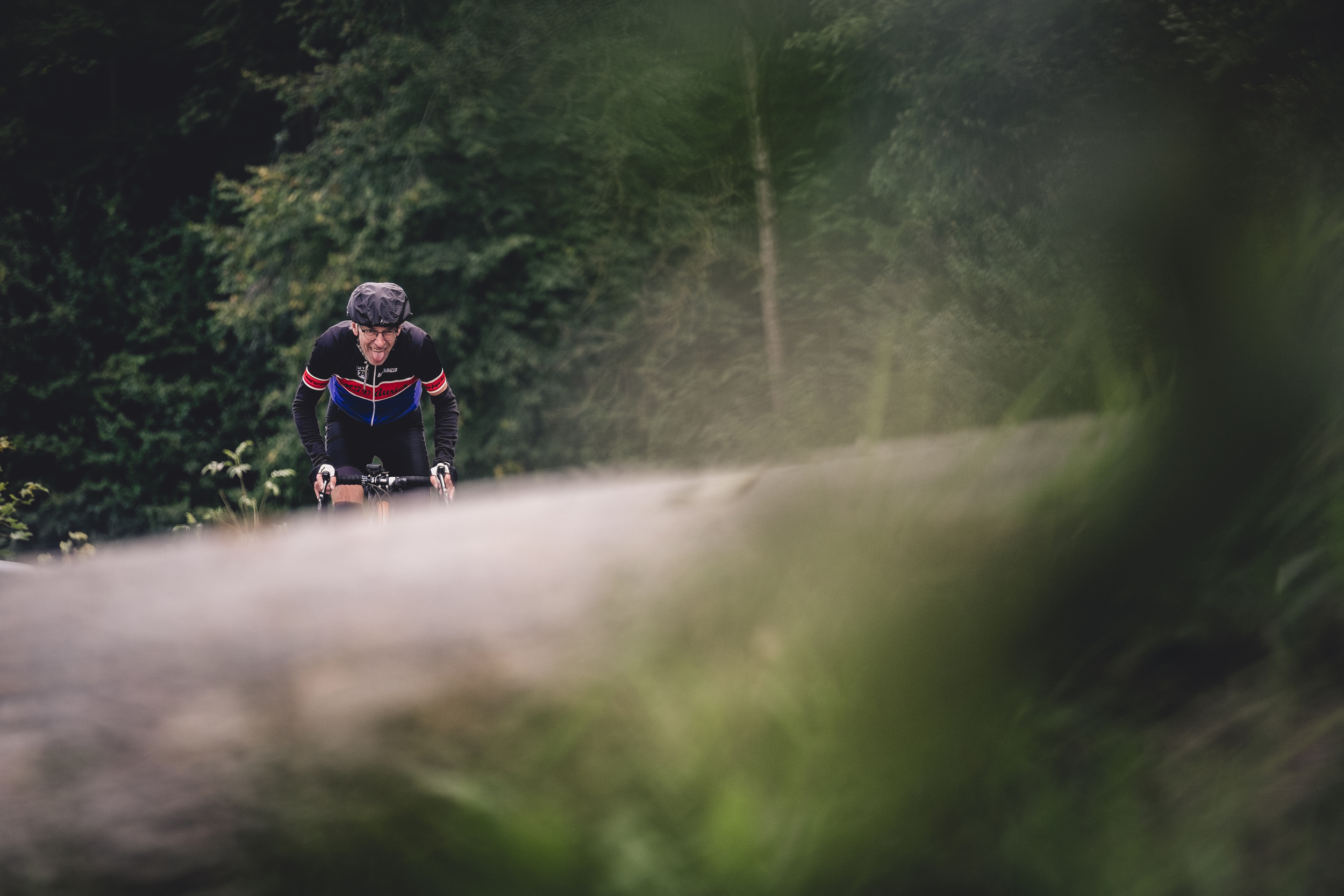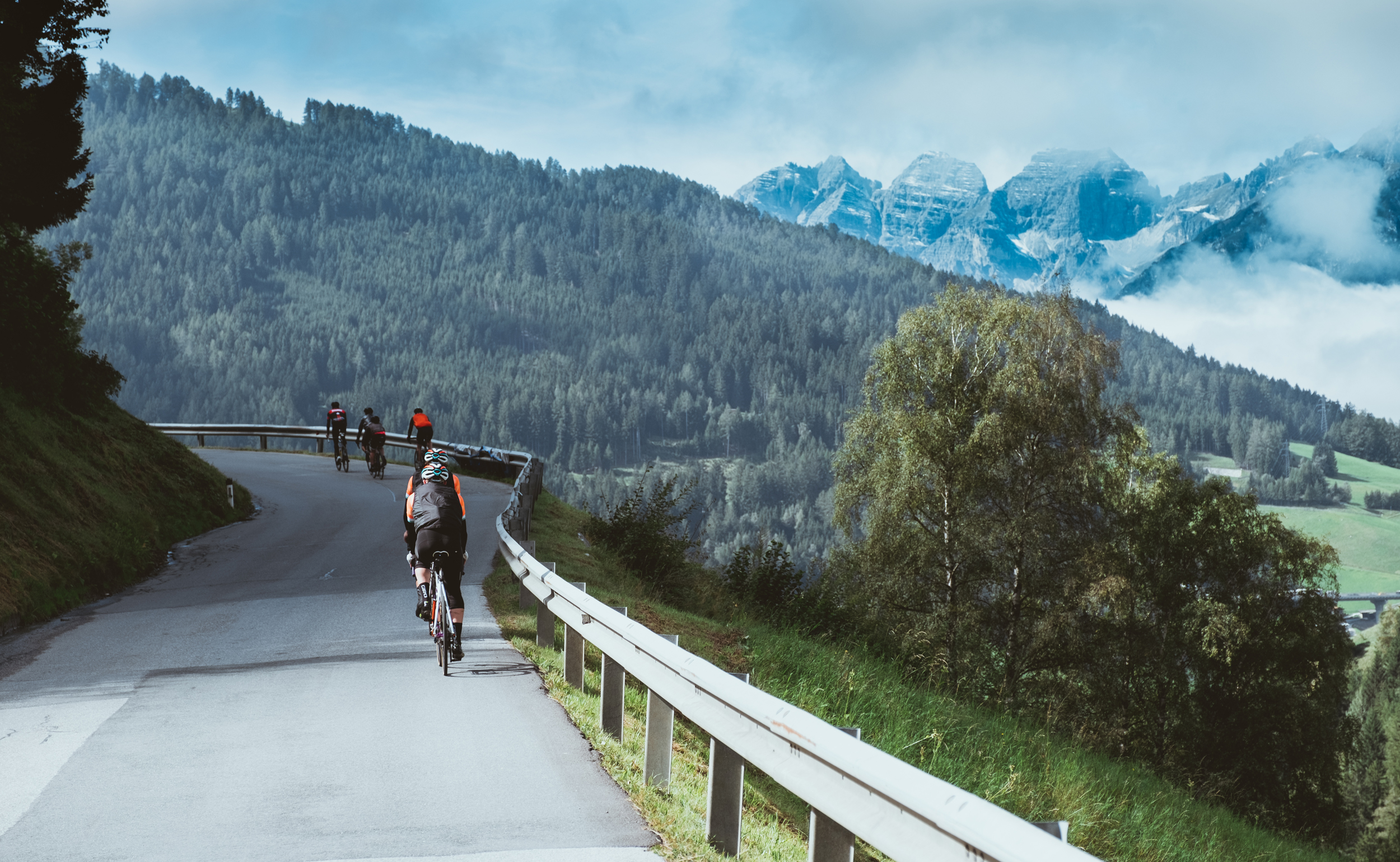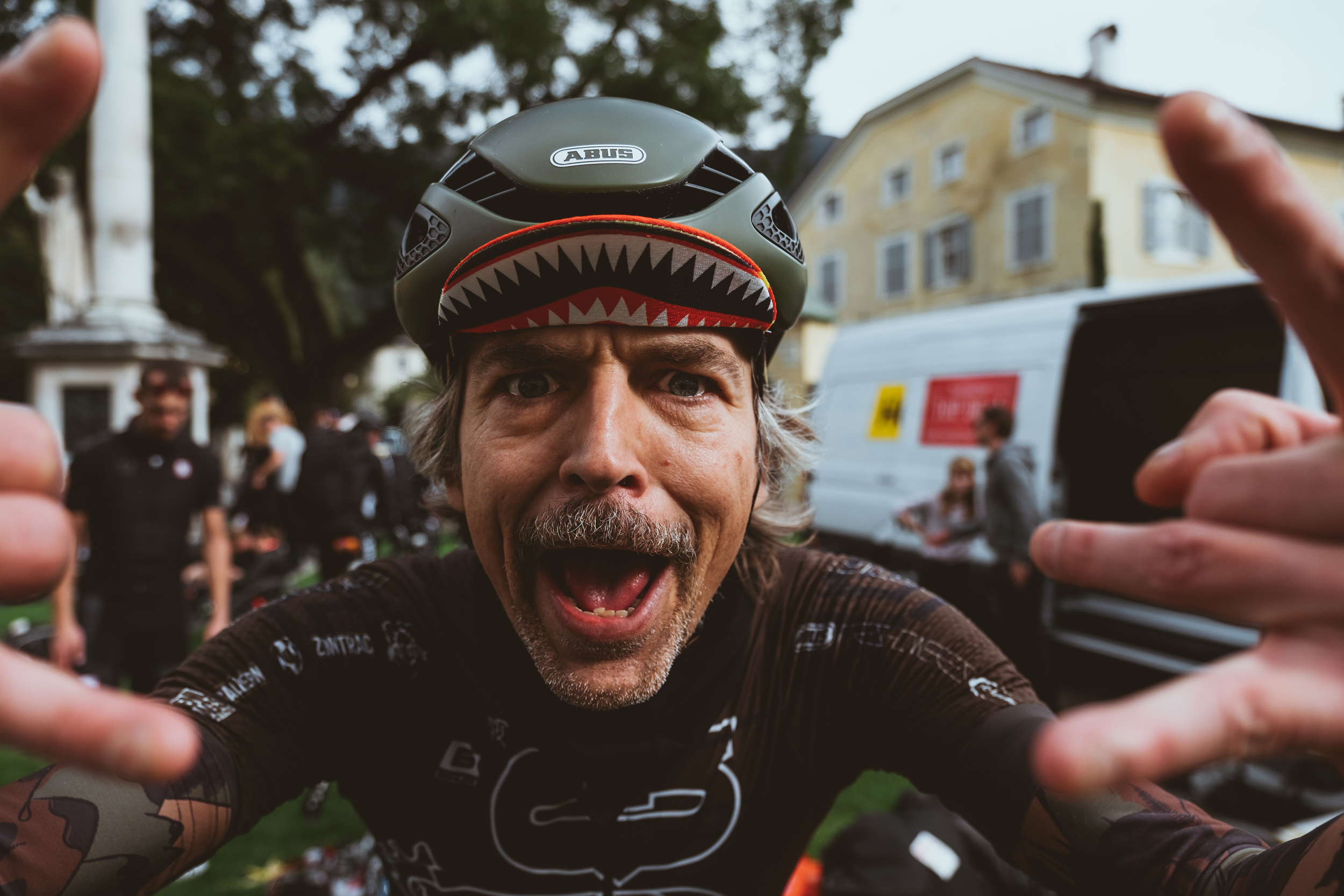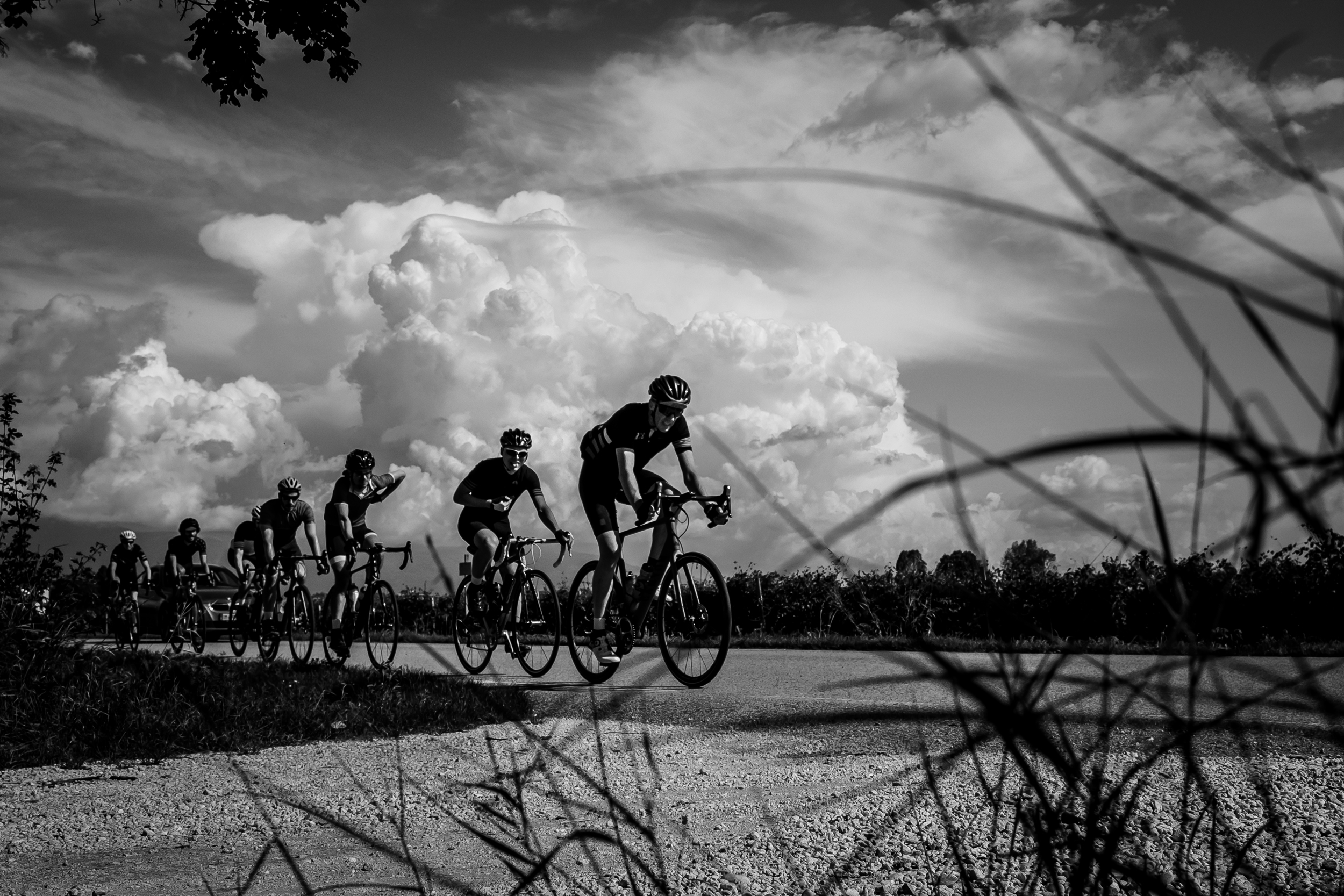Do you know the photographers on their motorbikes at the Tour de France? We did the same at the Rad Race Tour de Friends this September to follow a special bicycle race over the alps. Harsh weather, a special situation on a motorbike, streets open for traffic and a new camera system pushed us to the limits.
This September I had the great opportunity to be one of the official photographers of Rad Race’s first edition – Tour de Friends. A four day stage race over the alps. It was the first real test for my new Fujifilm X-T2 system and pushed me through the limits. We experienced all weather conditions you can think of in the mountains and, of course, four whole days on the motorbike and editing under real time pressure after each day. While every photographer who did the tour by car, could always import their stuff during their drive, we always were on the bike and fought with the serpentines. For me it was important to have a plan what kind of photos I want to take. We had the great luck that we had no special mission how to shoot. They just wanted our different styles. Normally I shoot trail running, running and cycling. For these sports I never wanted to have a big system to carry with me. In my opinion it’s more about if you can feel when an important situation arises and where to be, than having a 40 Megapixel camera with you. For me as a new professional shooter, I really like what I get with my Fujifilm gear. It is fast, it is accurate, has an outstanding viewfinder and the AF System works really good in my eyes. What I really enjoy is that Fujifilm really tries to improve their cameras through great updates and I’m excited about the new AF algorithm in their next update.
LENSES
I just started using the X-T2 since I decided to make my move to professional sports photography this year. The XF16-55mm f2.8 is my lens of choice and I shoot almost 90% with this lens. I really hope that there will be a 16-55 f2.0 in some day, because in my opinion it’s always about capturing light and the right depth of field. I think this is why a lot of sports photographers don’t choose APS-C because they want this typical full frame depth of field picture and they think they can not reach it with an APS-C Camera. But in my opinion Fuji has amazing prime lenses for this specific demand.
In addition to my 16-55, I use the XF50-140mm f2.8, in case I really want that the person or subject to stand for its own. I like to see emotions through my pictures and to be close in the hussle. If I’m indoor or in bad light situations, I try to change to prime lenses like the 35mm f2 or the 16mm f1,4. They both make outstanding photos.
But what I really love is, that you do not need to rely on your AF system as you can adapt almost every great old manuel focus lens for your X-T2. I use my 50mm f1.4 Pentax Asahi Takumar. It creates a completely different look and with focus peaking and some practice it is really easy and fast to use.
I know many sport shooters who use longer focal lengths as they think they need them, but I really don’t feel that I need them that often that it will be important enough to own them. It might be different in other sports or other situations, but for now I’m getting along very well without any.
LIGHTING
When shooting sport events you mostly find yourself in difficult lighting situations. When your are in a velodrome, it is a challenge in terms of the light that is available, if you are not allowed to use a HSS Flash. When you cover a stage race, like we did, you start in the morning with little light. Sometimes you start with a great sunrise and after this, the whole stage is at bright light and harsh short shades, while another stage could be in deep shade when you riding through a forrest . You have to be prepared for constantly changing conditions. It’s good to be versatile with your camera system, to check the weather forecast and to check your stage route, in order to know what will happen over the day. If you are well prepared, you will not lose your way to shoot and you will still feel comfortable, which in turn will result in better pictures.
SHUTTER SPEED
To freeze the action, you will need a shutter speed at a minimum of 1/800 seconds. If the lightning conditions don’t allow that, you need to play with different techniques or higher ISO.
Shooting in a rainy forrest can bring you in trouble when you want to freeze your pictures. To obtain as little as possible noise, I try to stay under ISO 2000. Sometimes when I use black and white for my pictures I like some grain in it. That’s when I start experimenting with higher ISO as you saw in the first picture. It was really dark but with amazing contrasts due to the street light falling right in the perfect moment into his face.
Cycling pictures are some kind of boring, when you freeze them in the wrong moment. Therefore it is necessary to play with panning. I would recommend using shutter speed of 1/60 of a second and ISO lowered down as far as you can go. But if you have enough the time to try it, start at 1/125s and go down to 1/15s and see what happens or what style fits you most. Don’t be upset if you don’t catch every shot. When you get the right moment you will have an extraordinary picture. It’s always like winning a lottery feeling.
To select the shutter speed I have the dial set to ‘T’ and I adjust using the rear command dial. With that I can adjust the shutter speed accordingly, without taking off my eye from the viewfinder.
The shutter dial is kept locked but for the ISO I always decide in the situation. Sometimes I use A-Mode for the ISO but for more darker images I want to keep the ISO as little as possible. I might correct the files later through Lightroom, if they are to dark. Due to the great processor you can really get great details out of underexposed images. But when they are overexposed you don’t get details back.
CAMERA SETTINGS
This are my usual camera settings, which were used on the X-T2:
- Shutter dial set to ’T’ (and locked); shutter speed selected on rear command dial
- Aperture set to wide open
- ISO dial set and locked
- OIS on, when shot with 50-140
- AF set to continuous (AF-C)
- AF custom setting number 2 (ignore obstacles) or custom settings
- AF set to ‘Zone’ with a 3 x 3 square (I also use single point for faces or when I want a specific rider in the peloton)
- Mode switch selected to boost to increase the performance of the cameras AF, drive and EVF
- Drive set to CH with 11 frames per second, always using the battery grip
- Image Quality set always to RAW
- SD Cards: Transcend Read:285Mb/s and Write 180MB/s, this allows the camera’s buffer to clear as quickly as possible after each burst.
- Provia or Acros film simulation, NR +4, DR 200, +2 Sharpness, +1 Color, WB Auto, Face Detection of
5 Tips for any sports photography:
- Emotions are everything
- Play with the lights and shades
- Don’t change your lens too often during the competition/race as you will miss interesting moments. You always need some time to arrange with your new focal length and so on.
- Play with pan effect to show more motion
- Experiment with different angles, perspectives and don’t forget the backgrounds


